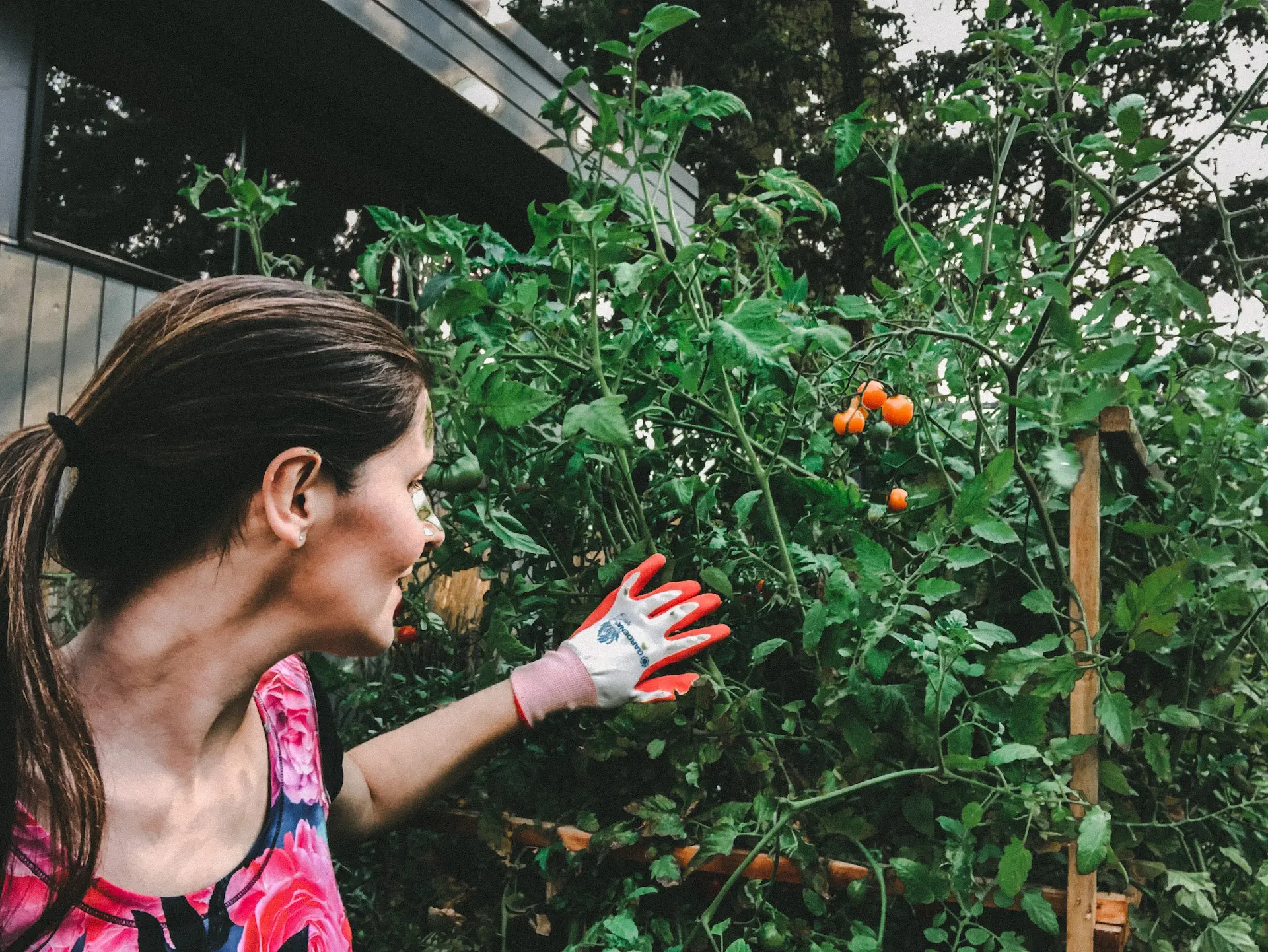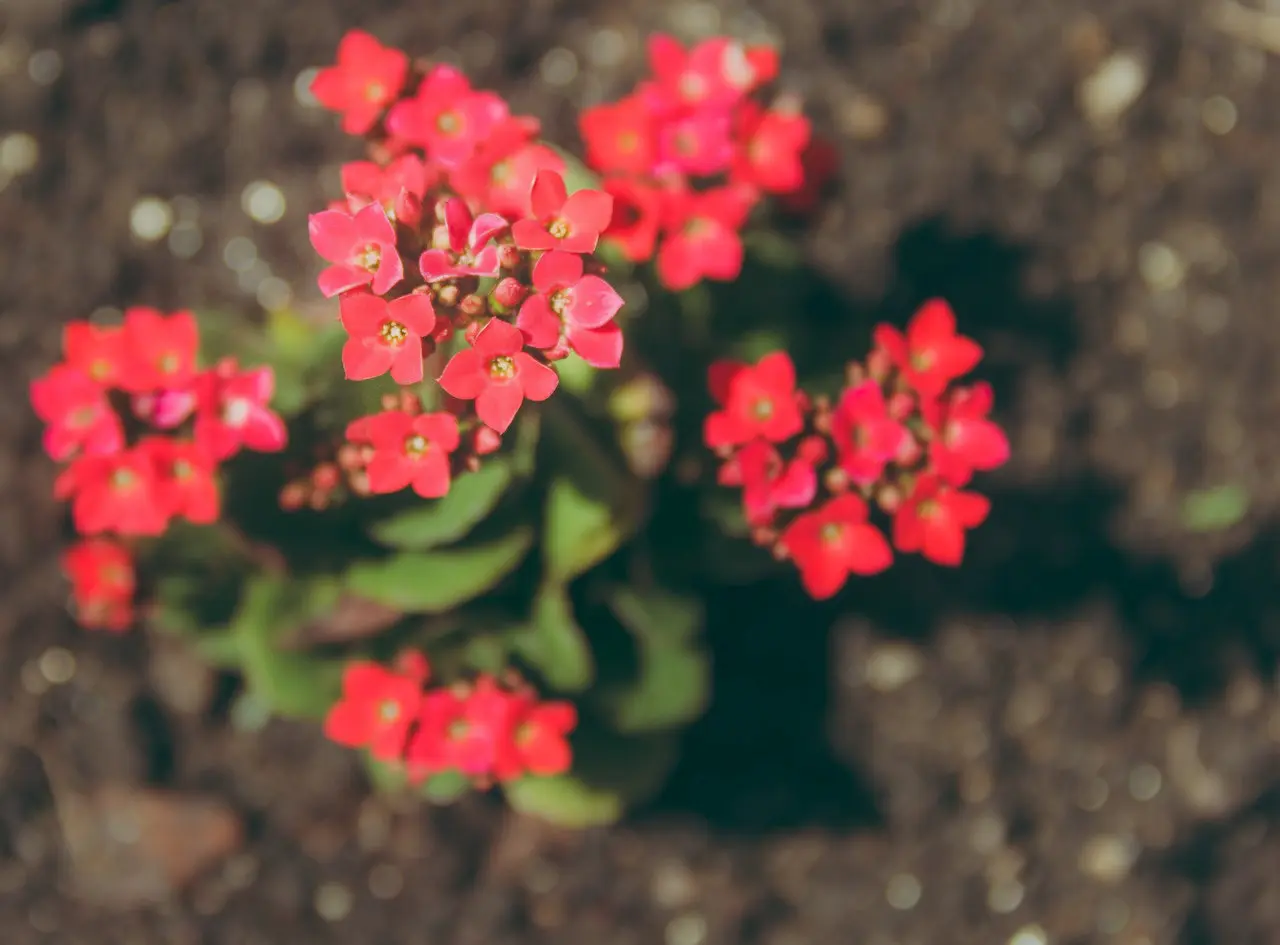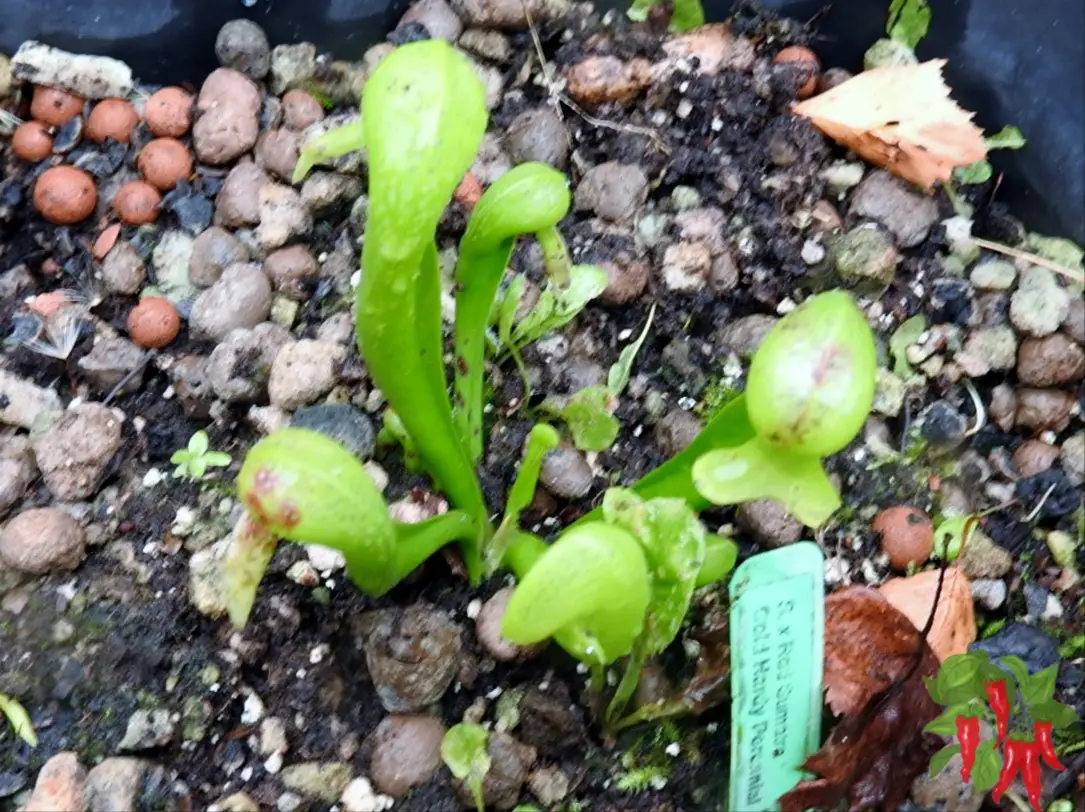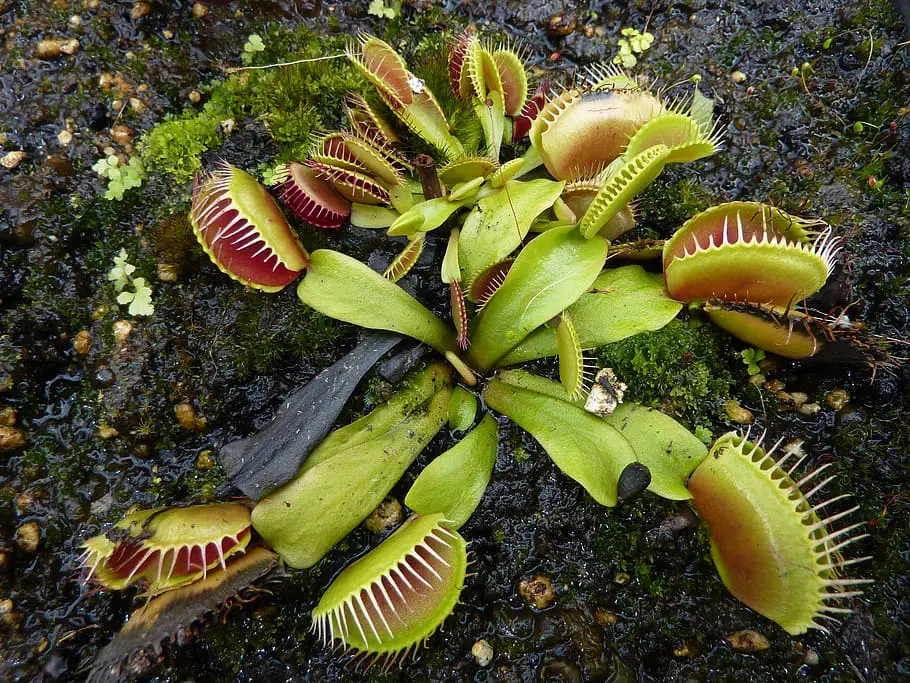This post contains affiliate links. If you buy something from one of our links we may earn a commission. Thanks
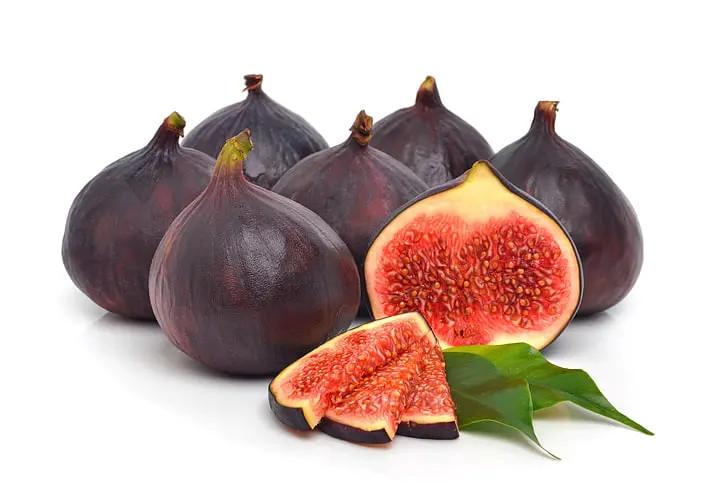 Discover the joy of caring for fig trees indoors with our comprehensive guide. Dive into a green journey from selection to harvest, in your own home.
Discover the joy of caring for fig trees indoors with our comprehensive guide. Dive into a green journey from selection to harvest, in your own home.
- Caring for fig trees indoors involves selecting a suitable variety.
- Ensuring a well-draining pot with rich soil.
- Place the tree in a well-lit area.
- Maintain a balanced watering and feeding schedule.
- Address common pests and diseases promptly.
- Periodic pruning and occasional outdoor sun exposure during summer further enhance growth and fruit production.
Dive into the gratifying world of indoor gardening by growing your own edible fig trees.
Discover the essential steps and tips to foster a healthy fig tree indoors, from choosing the right type to providing the proper care.
Let’s unravel the journey of nurturing a fruitful fig tree right in your living space.
Caring for Fig Trees Indoors
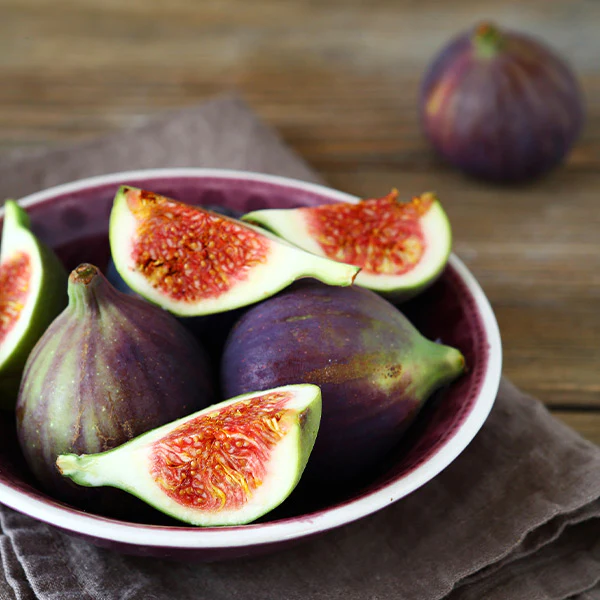
Embarking on the journey of indoor gardening can be a rewarding endeavor, especially when it leads to producing your own delicious fruit.
Among the myriad of fruit trees suitable for indoor cultivation, fig trees stand out for their ease of care and the delightful bounty they offer.
Unlike their trendy counterparts like fiddle-leaf figs, common fig trees (Ficus Carica) provide not just aesthetic appeal but a scrumptious harvest as well.
As we delve into the essentials of caring for fig trees indoors, we’ll explore the steps from selecting the apt variety to ensuring fruitful production.
This comprehensive guide aims to equip you with the knowledge needed to enjoy fresh figs from your indoor sanctuary.
I. SELECTING THE RIGHT FIG TREE VARIETY
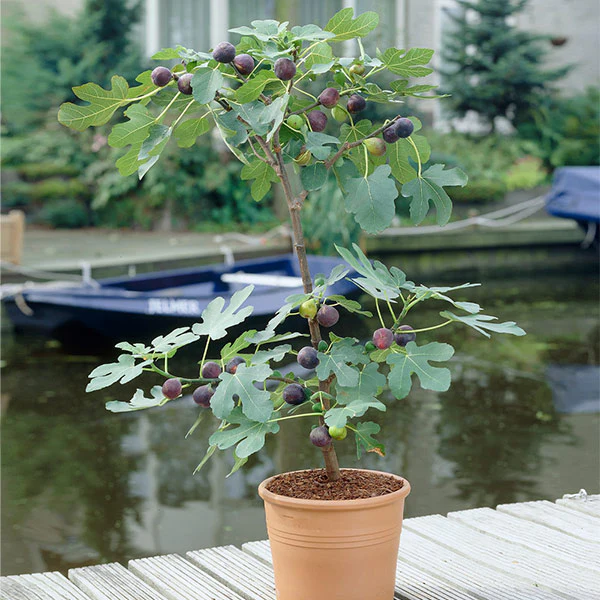
Based on the research, here are several recommended varieties of fig trees for indoor cultivation:
- Negro Largo: This variety is mentioned as the most common fig tree grown indoors, indicative of its suitability for indoor environments
- Petit Negri: Another variety suitable for indoor cultivation, known for its compact growth ideal for container gardening
- Violet De Bordeaux: A variety well-suited for indoor cultivation, adding a touch of elegance with its unique coloration
- Black Jack: This variety is also suitable for indoor cultivation, and could be a good option for those looking to grow figs indoors
- Little Ruby Fig: Known for its compact size and fruit-bearing capability, making it a viable option for indoor cultivation
- Black Mission Fig: A popular choice for indoor fig cultivation due to its adaptability and fruit production
- Brown Turkey Fig: This variety is often recommended for indoor cultivation owing to its resilience and fruit-bearing nature
- Italian Honey Fig Tree: A choice that can be grown indoors for its delightful fruit production
- Petite Negra: Specifically mentioned as the best choice for growing fig trees indoors due to its dwarf nature, which makes it ideal for container gardening3.
- Fiddle Leaf Fig, Weeping Fig, and Strangler Fig: Although these varieties are mentioned for indoor cultivation, they are not primarily known for their edible fruits but rather for their ornamental value
Each of these varieties has its unique characteristics and may fare differently depending on the specific indoor conditions they are provided.
It’s advisable to consider factors such as available space, lighting conditions, and personal preferences when choosing a variety to cultivate indoors.
Research on Fig Tree Varieties Suitable for Indoor Cultivation

- Engage in thorough research to identify fig tree varieties that are well-suited for indoor cultivation. Not all fig trees are created equal; some are more conducive to indoor environments than others.
- Ficus Carica, commonly known as the common fig tree, is a prime choice for indoor growing. It’s crucial to opt for varieties known for their edible fruit, distinguishing them from ornamental varieties like the Ficus Lyrata or fiddle leaf fig tree.
- Seek advice from local nurseries or online gardening communities which might have insights on the varieties that thrive indoors, especially in your specific USDA hardiness zone if you’re in North America.
Consider Factors like Size, Growth Rate, and Fruit-Bearing Capabilities
- Size: When choosing a fig tree variety, consider the space you have available. Some fig trees can grow quite large, even indoors. Look for dwarf or semi-dwarf varieties that are more manageable in size for indoor cultivation.
- Growth Rate: Understanding the growth rate of different fig tree varieties will help you anticipate how quickly you’ll need to upgrade to a larger container or prune to manage size.
- Fruit-Bearing Capabilities: The ultimate goal is to enjoy delicious fruit from your indoor fig tree. Ensure the variety you choose is known for reliable fruit production. It’s a good idea to read reviews or consult with experienced gardeners to gauge the fruit-bearing capabilities of different varieties.
In selecting the right fig tree variety, you lay a solid foundation for a rewarding indoor gardening journey.
The right choice will not only enhance the aesthetics of your living space but also promise a supply of fresh figs to savor.
In the following section, we’ll delve into the propagation of your chosen fig tree variety, marking the beginning of your fruitful venture.
II. PROPAGATING YOUR FIG TREE

The journey of growing an edible fig tree indoors begins with successful propagation.
Unlike ornamental cousins like fiddle-leaf figs, propagating common fig trees (Ficus Carica) is a straightforward process, often achieved through cuttings.
This method ensures the new tree retains the fruit-bearing qualities of its parent.
Let’s explore the nuances of propagation, from preparing the cutting to nurturing it through the initial growth phase, setting the stage for a thriving indoor fig tree.
Understanding the Common Practice of Propagation from Cuttings
- Propagating fig trees from cuttings is a time-tested method that yields reliable results. This method involves taking a cutting from a healthy, mature fig tree, preferably during the late winter or early spring when the tree is dormant.
- The best time to take cuttings is just before the onset of the growing season, as this is when the tree has enough energy stored to kickstart new growth.
- Cuttings should be about 6 to 10 inches in length, with several healthy buds. It’s a good practice to take cuttings from the middle sections of young branches.
- Understanding the difference between hardwood and softwood cuttings is essential. Hardwood cuttings are preferred for fig trees as they are taken during the dormant season and tend to root successfully.
Preparing the Cutting and Choosing the Right Rooting Medium
- Once you have a healthy cutting, it’s essential to prepare it properly. Trim the cutting to have a clean cut at the base, and remove any leaves, except for a few at the top to encourage photosynthesis.
- The rooting medium is crucial for the success of your cutting. A well-draining potting mix, possibly amended with perlite or sand to improve drainage, is ideal. The medium should retain enough water to keep the cutting hydrated but not so much that it risks root rot.
- Inserting the cutting about 2 to 3 inches into the soil, ensuring good contact between the cutting and the soil, is crucial for rooting success.
Ensuring a Conducive Environment for Rooting and Initial Growth
- Place the potted cutting in a location that receives bright, indirect light. A south-facing window or a spot near a grow light can provide the necessary light exposure without the risk of scorching the young plant.
- Maintaining high humidity levels around the cutting will encourage rooting. You can achieve this by placing a plastic bag or a plastic dome over the pot to retain moisture.
- Keeping the soil moist but not waterlogged is key. A thorough watering initially, followed by misting or light watering to maintain soil moisture, will foster healthy root development.
- Once you observe new growth indicating successful rooting, gradually acclimate the young fig tree to less humid conditions and prepare for transplanting it into a larger container.
With a well-rooted cutting, you are one step closer to having a flourishing indoor fig tree.
The process of propagation is a testimony to the miraculous journey of growth, from a humble cutting to a fruit-bearing tree.
As we transition into the next phase, we’ll explore the ideal pot size and material to ensure your fig tree has room to grow and thrive.
III. THE IDEAL POT: SIZE AND MATERIAL

Transitioning your propagated fig tree into its new home is a pivotal step in its growth journey.
The right pot size and material are crucial for the healthy development and fruit production of your indoor fig tree.
Unlike the fiddle leaf fig tree which may prioritize aesthetics, when it comes to edible fig trees, functionality leads the way.
A suitable pot caters to the root system’s growth, ensuring good drainage to prevent waterlogging and root rot, while also complementing your indoor space.
Let’s delve into how selecting an appropriate pot can significantly impact the health and productivity of your fig tree.
Selecting a Pot of Approximately 5 Gallons, with a Diameter of Around 18 Inches
- A 5-gallon pot, measuring about 18 inches in diameter, offers ample space for the root system of a young fig tree to spread and establish itself. This size also provides a good balance, offering enough room for growth without overwhelming the young tree with too much soil, which could retain excess water and lead to root rot.
- As your fig tree grows, it may require transplanting into a larger container to accommodate its expanding root system. The transition to a larger pot should be gradual, moving up in size as the tree grows to ensure continuous growth and fruit production.
- Pot size can significantly affect how much water the soil retains. Larger pots may hold moisture for a longer duration, reducing the frequency of watering. Understanding this can help in maintaining the right soil moisture levels for your fig tree.
Understanding the Importance of Drainage and Choosing the Right Material for the Pot
- Drainage is paramount when it comes to preventing root rot. Ensure your pot has several drainage holes at the bottom to allow excess water to escape. Good drainage is essential to prevent waterlogging, a common issue that could lead to root rot, a peril often faced by indoor plant enthusiasts.
- The material of the pot also plays a significant role in managing soil moisture. Terracotta pots are porous and allow soil to dry out faster, which can be beneficial in preventing over-watering. Plastic pots retain moisture for longer, which might be suitable if you live in a dry climate or if your indoor environment has low humidity levels.
- Other materials like ceramic or glazed pots also retain moisture but offer a variety of aesthetic choices. Select a material that not only suits the needs of your fig tree but also complements your indoor decor.
The right pot lays the groundwork for a thriving indoor fig tree, setting the stage for subsequent growth stages and eventual fruit production.
As we venture further into the indoor gardening journey, the next section will shed light on positioning your fig tree indoors to receive adequate light, a vital element for its growth and fruiting success.
IV. POSITIONING YOUR FIG TREE INDOORS
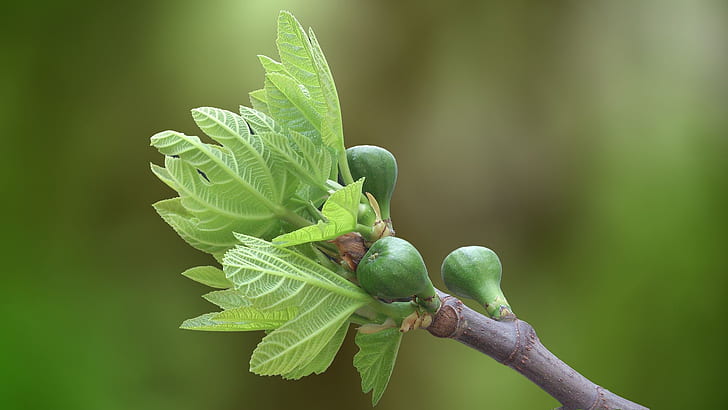
Positioning your fig tree correctly indoors is a vital step towards ensuring its healthy growth and fruit production.
Unlike tropical plants or fiddle-leaf figs, edible fig trees have specific light requirements that significantly impact their ability to bear fruit.
A suitable location with the right amount of light can mimic the natural growing conditions of Ficus Carica, promoting lush foliage and enticing fruit.
Let’s explore the ideal placement and lighting conditions for your indoor fig tree to thrive and yield a bountiful harvest.
Placing Your Fig Tree in a Location with Filtered Light
- Fig trees love sunlight, but when grown indoors, they prefer filtered or indirect light to prevent scorching their leaves. Placing them near a south-facing window where they can receive bright but filtered light is ideal.
- If a south-facing window is not available, an east or west-facing window can also work. The key is to ensure the light is bright yet diffused. You can achieve this by using sheer curtains to filter the harsh sunlight.
- Alternatively, placing your fig tree in a well-lit room with plenty of natural light flowing in can also provide the light conditions it needs. If your indoor space lacks adequate natural light, consider using a grow light to supplement the light requirements of your fig tree.
Understanding the Lighting Requirements and Making Adjustments as Necessary
- Fig trees require about 6 to 8 hours of light per day, preferably of bright, indirect light. Monitoring the light exposure and adjusting the position of your fig tree to meet this requirement is crucial for its growth and fruit production.
- Pay attention to the leaves and growth of your fig tree as they can indicate whether it’s receiving enough light. Lush, green leaves and steady growth are good signs. On the other hand, leggy growth, leaf drop, or pale leaves may indicate inadequate light.
- If natural light is insufficient, a grow light can be a valuable investment. Choose a grow light that mimics natural sunlight and place it close to the fig tree, ensuring it covers the entire canopy for uniform growth.
- As seasons change, the amount of natural light available may change too. Be prepared to adjust the position of your fig tree or the settings of your grow light to ensure your fig tree continues to receive the light it needs.
Ensuring the right lighting conditions for your indoor fig tree is a balance between providing enough light for growth and fruit production, without causing harm such as scorching.
The journey doesn’t stop here; up next, we’ll delve into the nutrition and watering regime to keep your fig tree healthy and ready to bear delicious fruit.
V. NUTRITION AND WATERING REGIME
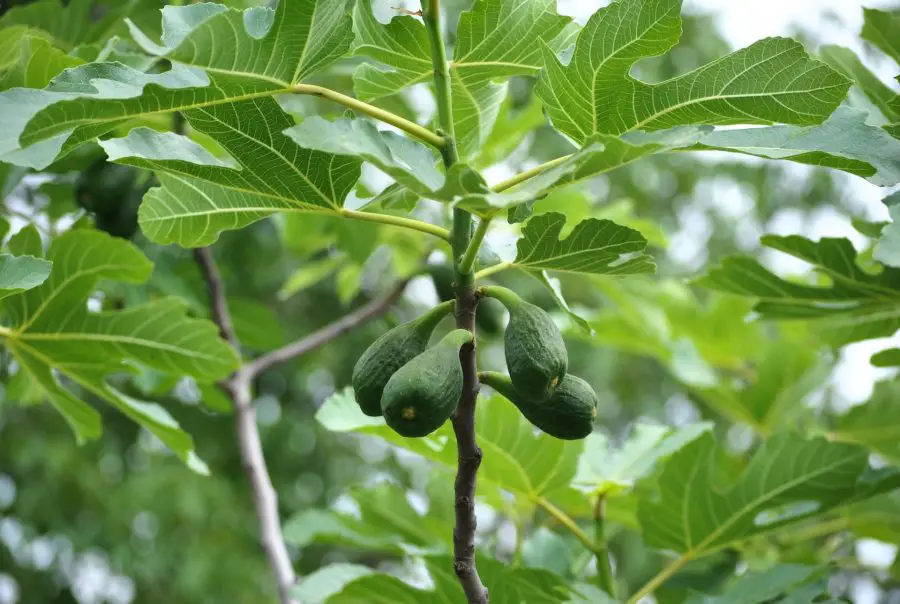
Nurturing your indoor fig tree requires a keen understanding of its nutritional and watering needs.
These two factors significantly contribute to the overall health, growth, and fruit production of your fig tree.
A balanced nutrition regime and a well-monitored watering schedule create a conducive environment for your fig tree to thrive indoors.
Unlike indoor tropical plants that might have different nutritional requirements, edible fig trees have a unique set of needs that, when met, lead to lush foliage and a rewarding harvest of fresh figs.
In this segment, we will delve into the feeding and watering regimen essential for the prosperity of your indoor fig tree.
Feeding Your Fig Tree with Balanced Plant Food Every Two Weeks, Except in Winter
- A balanced plant food, such as a fertilizer with an N-P-K ratio of 20-20-20, provides the necessary nutrients for your fig tree to grow and produce fruit. Applying a balanced fertilizer every two weeks during the growing season, typically from late spring to early fall, keeps your fig tree nourished.
- The application rate recommended is about 1/2 teaspoon of the fertilizer crystals mixed with a gallon of water, ensuring a diluted solution that won’t harm the roots.
- During the winter months, it’s advisable to halt fertilization as the fig tree enters a dormant period. The tree’s nutritional requirements are reduced, and continuing with fertilization can lead to nutrient buildup in the soil, which could be detrimental.
Understanding the Watering Needs and Ensuring the Soil Remains Moist but not Waterlogged
- Fig trees prefer a consistent moisture level in the soil. Over-watering can lead to waterlogged soil and eventually root rot, a common issue among indoor fruit trees. On the flip side, under-watering can lead to dry soil and stress the tree.
- The best way to gauge when to water is to check the top 1-2 inches of soil for moisture. If it feels dry, it’s time to water. Ensuring the soil has good drainage will allow excess water to escape, preventing waterlogging.
- During the growing season, your fig tree may require more frequent watering to support new growth. Conversely, during the winter months, reduce watering to prevent waterlogging as the tree’s water uptake is lowered during dormancy.
- Employing a well-draining potting mix and ensuring your pot has ample drainage holes at the bottom are vital steps in managing soil moisture effectively.
The nutrition and watering regime is the lifeline of your indoor fig tree, establishing a solid foundation for healthy growth and a fruitful harvest.
As we continue on this green journey, the next segment will focus on pruning and shaping your fig tree, essential practices for maintaining a well-structured and productive tree indoors.
VI. PRUNING AND SHAPING

Pruning and shaping are vital practices in the care regimen of your indoor fig tree, significantly impacting its health, growth, and fruit production.
These practices not only enhance the aesthetic appeal of your fig tree but also promote a structured growth pattern, facilitating sunlight penetration and air circulation.
Mastering the art of pruning and shaping can transform your indoor fig cultivation journey, leading to a well-maintained, fruitful tree.
In this section, we’ll explore the timing, techniques, and benefits of pruning and shaping your fig tree, setting the stage for an abundant harvest of delicious fruit.
Learning When and How to Prune Your Fig Tree for Healthy Growth and Fruit Production
- Timing: The best time to prune your fig tree is during the late winter or early spring when the tree is dormant. This timing minimizes stress on the tree and allows for robust new growth in the upcoming growing season.
- Technique: Begin by removing any dead, diseased, or damaged branches to promote healthy growth. Use sharp, clean pruning shears to make clean cuts, reducing the risk of infection.
- Fruit Production: Fig trees bear fruit on the previous year’s growth. Light pruning encourages fruit production by allowing sunlight to reach the inner branches. Over-pruning, however, can reduce fruit yield, so a balanced approach is key.
- Shape Maintenance: Maintain a desirable shape by pruning any overly vigorous branches that are growing out of form. This helps in creating a balanced canopy that allows for sunlight penetration and air circulation.
Understanding the Benefits of Shaping and the Right Techniques to Employ
- Aesthetic Appeal: Shaping your fig tree enhances its aesthetic appeal, making it a delightful centerpiece in your indoor garden. A well-shaped fig tree complements your indoor space while providing the joy of fresh figs.
- Improved Air Circulation: Proper shaping promotes better air circulation around and within the tree, which in turn reduces the risk of fungal diseases. It also allows for better light penetration, which is crucial for photosynthesis and fruit production.
- Ease of Care: A well-shaped fig tree is easier to care for as it requires less corrective pruning in the future. It also makes tasks like watering, feeding, and pest inspection more manageable.
- Techniques: Employ techniques like tip pruning to encourage bushier growth and thinning out dense areas to improve light penetration and air flow. Each cut made should have a purpose, whether to remove dead wood, open up the canopy, or encourage new growth.
Pruning and shaping are instrumental in the journey of growing a fruitful indoor fig tree.
Mastering these practices sets the pace for a rewarding gardening experience, paving the way for abundant fruit production.
As we delve further into the nuances of indoor fig tree care, our next segment will explore the transition of your fig tree to outdoor sunlight during the summer, a step that significantly enhances its growth and fruit-bearing potential.
VII. TRANSITIONING TO OUTDOOR SUNLIGHT
Transitioning your indoor fig tree to the bountiful sunlight outdoors during the summer is a natural progression that significantly boosts its growth and fruiting potential.
This seasonal shift allows your fig tree to bask in the abundant sunlight, essential for photosynthesis and fruit production.
However, this transition requires a thoughtful approach to ensure your fig tree adjusts well to the outdoor environment and later, back indoors, without undue stress.
In this segment, we delve into the necessity of this outdoor excursion for your fig tree and the steps to ensure a smooth transition, fostering its growth and fruit production.
The Necessity of Outdoor Sunlight During Summer for Optimum Growth and Fruiting
- Sunlight Abundance: Fig trees are sun-loving plants that thrive in full sun conditions. The increased hours of direct sunlight during the summer are invaluable for their growth, foliage development, and fruit production. The outdoor sunlight provides a spectrum of light that is hard to replicate indoors, even with high-quality grow lights.
- Improved Photosynthesis: The ample sunlight outdoors enhances photosynthesis, the process through which the tree converts sunlight, water, and carbon dioxide into glucose and oxygen. This glucose provides the energy necessary for growth and fruiting.
- Natural Pest Control: Exposure to outdoor conditions can also aid in natural pest control as predatory insects help in managing common pests like spider mites or scale insects that may have found refuge in your indoor fig tree.
- Better Air Circulation: The natural breeze outdoors promotes better air circulation around the tree, reducing the likelihood of fungal diseases and creating a conducive environment for growth.
Preparing Your Fig Tree for Outdoor Exposure and Transitioning it Back Indoors
- Gradual Acclimation: Prepare your fig tree for outdoor exposure by gradually acclimating it to the outdoor environment. Start by placing it in a shaded or partially shaded area for a few hours each day, gradually increasing the exposure over a week or two until it’s ready for full sun.
- Location Selection: Choose a location outdoors that receives full sun, ensuring it’s protected from strong winds that could damage the foliage or young fruit.
- Monitoring: Regularly monitor your fig tree for signs of stress, pest infestations, or watering needs. The outdoor environment may necessitate a change in your watering regimen, and it’s crucial to adapt to the tree’s needs.
- Transitioning Back Indoors: As summer wanes and the temperatures begin to drop, especially at night, it’s time to transition your fig tree back indoors. Repeat the acclimation process in reverse, gradually reducing the outdoor exposure until your fig tree is ready to come back indoors. Ensure to check for pests and diseases before bringing it back indoors to prevent any infestations from spreading to your other indoor plants.
By understanding the benefits and the process of transitioning your fig tree to outdoor sunlight and back indoors, you are well on your way to nurturing a healthy, fruitful fig tree.
As we continue to explore the care of indoor fig trees, our next segment will delve into common challenges and solutions, ensuring you are well-equipped to tackle any hurdles that come your way in your indoor gardening journey.
VIII. COMMON CHALLENGES AND SOLUTIONS
As you nurture your indoor fig tree towards lush growth and fruitful yield, you may encounter some challenges along the way.
Common pests and diseases can pose threats to the health and productivity of your fig tree.
Being equipped with the knowledge to identify and address these issues promptly can significantly enhance your success in indoor fig cultivation.
In this segment, we delve into the common pests and diseases that may affect your fig tree, along with preventive measures and remedies to ensure your green companion thrives amidst these challenges.
Identifying Common Pests and Diseases Affecting Indoor Fig Trees
-
Pests:
- Spider Mites: These tiny arachnids can cause discoloration and speckling on leaves. They thrive in dry, warm conditions often found indoors.
- Scale Insects: They appear as small bumps on stems and leaves, feeding on plant sap and weakening your fig tree over time.
- Fungus Gnats: These small, fly-like pests can be a nuisance, and their larvae may feed on organic matter and roots in the soil.
-
Diseases:
- Root Rot: Over-watering and poor drainage can lead to root rot, a condition where the roots become mushy and decayed.
- Leaf Spot Diseases: These diseases cause dark brown spots on leaves and can occur due to fungal or bacterial infections, often exacerbated by high humidity and poor air circulation.
-
Recognition:
Regular inspections of your fig tree, including the underside of leaves and the soil, can help in early identification of pests and diseases, enabling timely intervention.
Implementing Preventive Measures and Remedies
-
Preventive Measures:
- Proper Watering: Avoid over-watering and ensure good drainage to prevent root rot and create an unfavorable environment for pests like fungus gnats.
- Air Circulation: Enhance air circulation around your fig tree to keep the foliage dry and reduce the risk of fungal and bacterial diseases.
- Regular Cleaning: Keep the foliage and the surrounding area clean to deter pests and diseases.
-
Remedies:
- Natural Predators: Introducing natural predators like ladybugs can help manage pests like spider mites and scale insects.
- Neem Oil: A natural pesticide and fungicide, neem oil can be effective in managing a variety of pests and diseases. Spraying neem oil on affected areas following label instructions can curb infestations and prevent future occurrences.
- Pruning: Prune away infested or diseased portions of your fig tree to prevent the spread of pests and diseases. Ensure to disinfect your pruning tools before and after use to avoid spreading infections.
Navigating through the common challenges and implementing solutions are part of the indoor gardening journey.
Being prepared and responsive to the needs of your fig tree fosters a healthy growth environment, paving the way for bountiful fruit harvests.
As we conclude our comprehensive guide on caring for indoor fig trees, let’s reflect on the rewarding experience and the delightful prospects of enjoying fresh, homegrown figs from your indoor oasis.
Conclusion
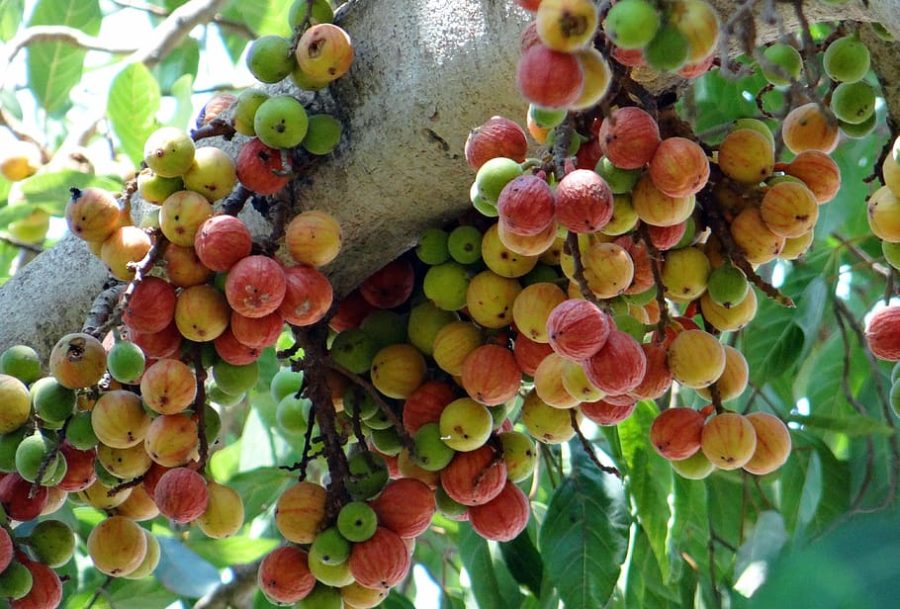
The journey of nurturing an indoor fig tree from a mere cutting to a fruit-bearing marvel is a rewarding endeavor imbued with learning, patience, and the joy of harvest.
The transition from selecting the right variety, and understanding the importance of a balanced nutrition and watering regime, to addressing common challenges underscores the holistic approach required for success in indoor fig cultivation.
As we conclude this comprehensive guide, let’s encapsulate the key takeaways and look forward to the delightful prospect of enjoying fresh figs from the comfort of your indoor garden.
- Selecting the Right Variety:
- The foundation of a successful indoor fig tree journey begins with choosing a suitable variety. Opt for varieties known for their indoor adaptability and reliable fruit production to enjoy a fruitful harvest.
- Nutrition and Watering Regime:
- A balanced nutrition and prudent watering regime are pivotal for the growth and fruiting of your fig tree. Adhering to a consistent feeding schedule, except during winter dormancy, and ensuring the soil remains moist but not waterlogged will foster a conducive environment for your fig tree’s prosperity.
- Pruning and Shaping:
- Mastering the art of pruning and shaping not only enhances the aesthetic appeal but also promotes a structured growth, facilitating sunlight penetration and air circulation essential for a healthy fig tree.
- Outdoor Sunlight Transition:
- The summer sojourn outdoors provides your fig tree with the much-needed sunlight for enhanced photosynthesis, growth, and fruiting. A gradual acclimation to outdoor conditions and back indoors ensures a smooth transition, reducing stress on the tree.
- Tackling Common Challenges:
- Early identification and prompt intervention in the face of common pests and diseases keep your fig tree healthy. Employing preventive measures and natural remedies will go a long way in ensuring the longevity and productivity of your fig tree.
- The Rewarding Harvest:
- The ultimate reward of your dedication and meticulous care is the bounty of fresh, delicious figs. The joy of plucking ripe figs from your indoor tree is a gratifying experience, making the journey worthwhile.
The cultivation of an indoor fig tree is a blend of science, art, and a dash of love.
As you adhere to the guidelines elucidated in this guide, you are well on your path to becoming a seasoned indoor fig gardener, with a thriving tree that stands as a testament to your green thumb.
The delightful essence of fresh figs is now just a branch away!



